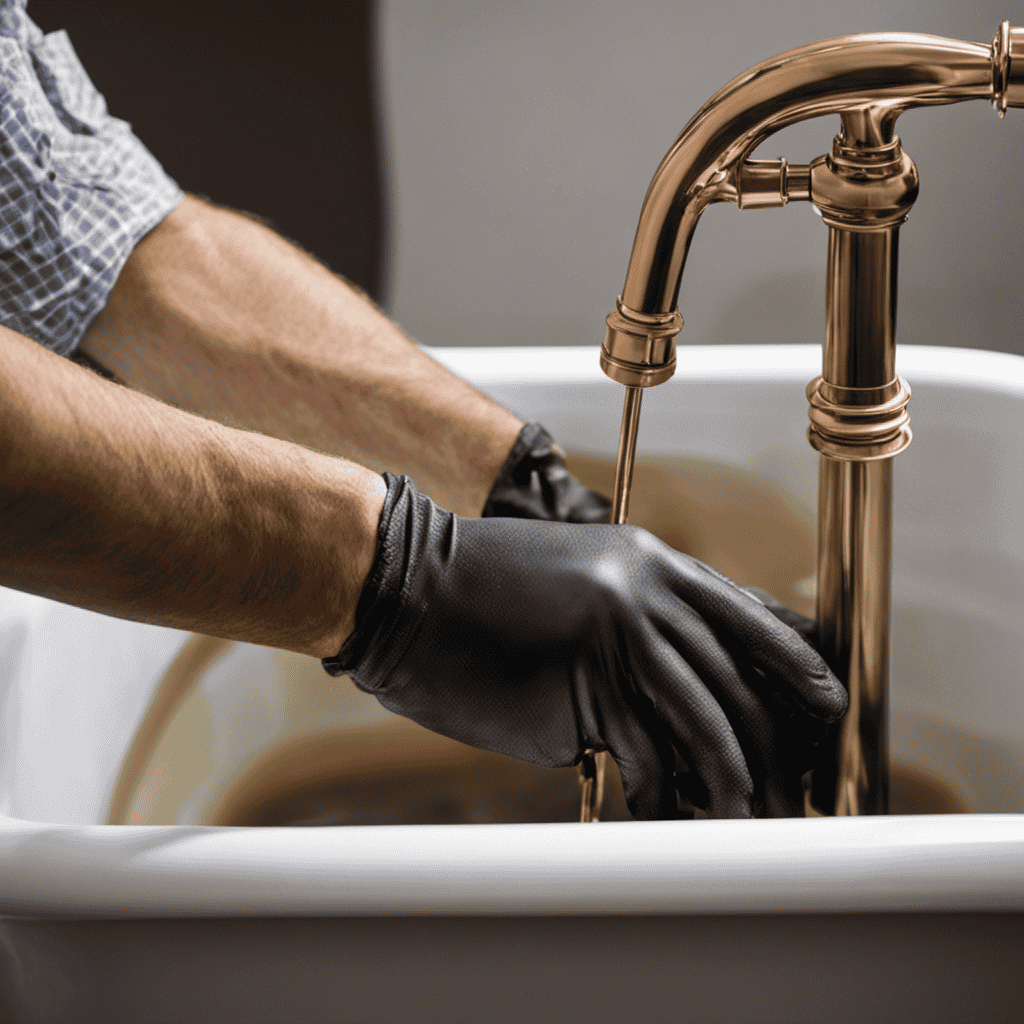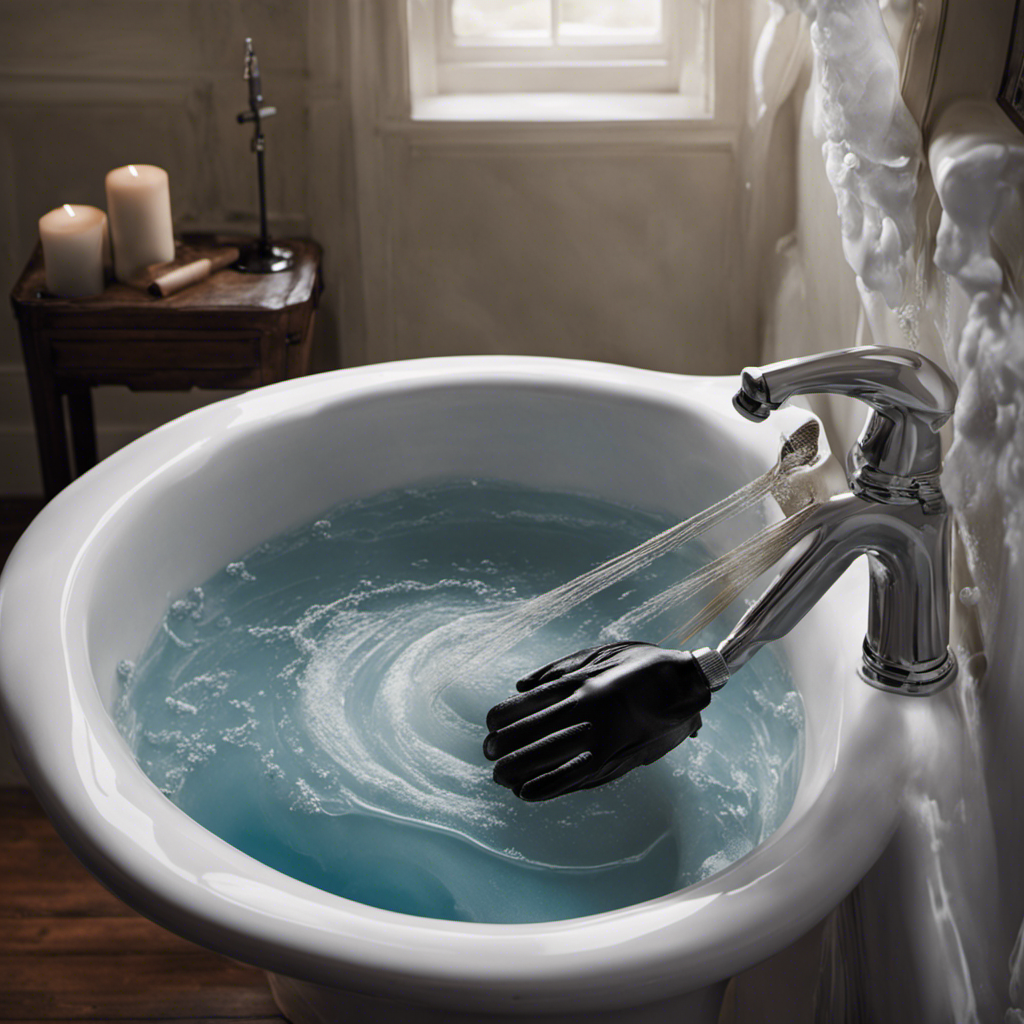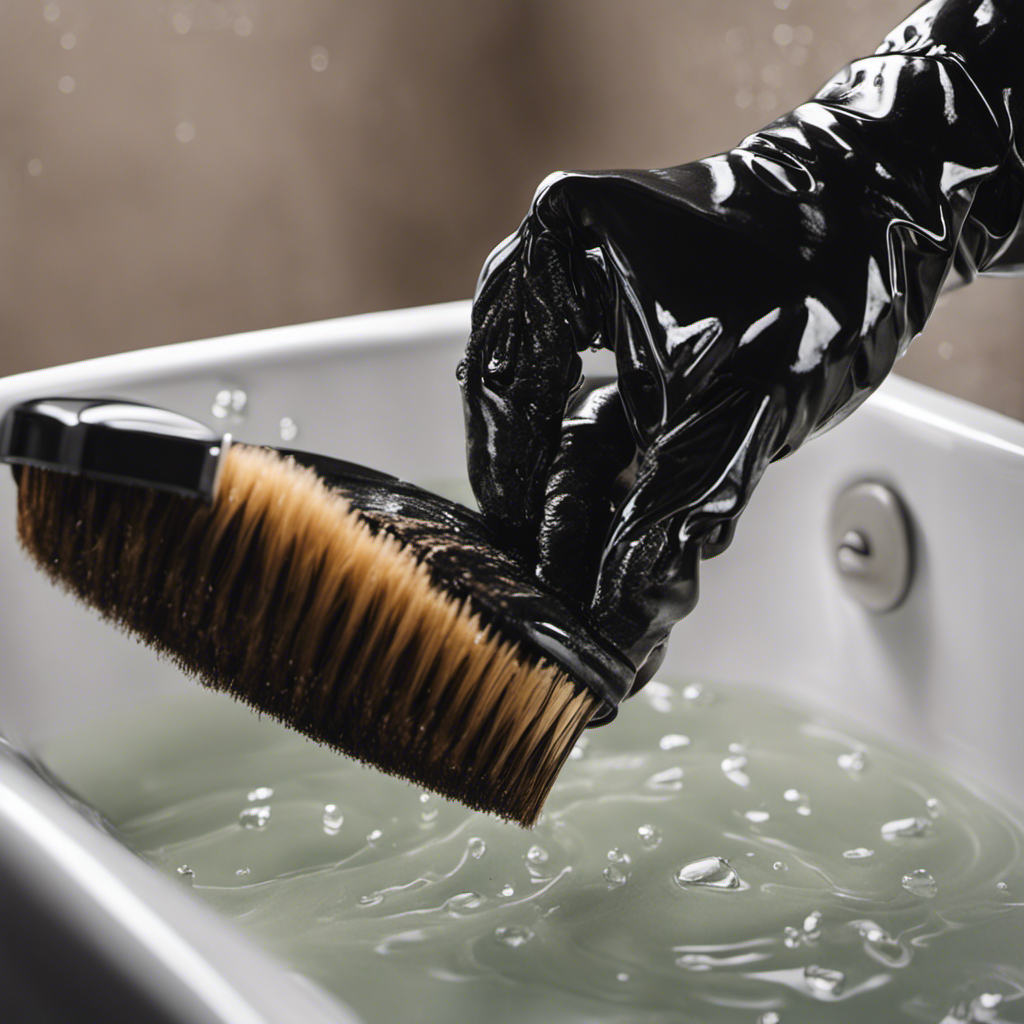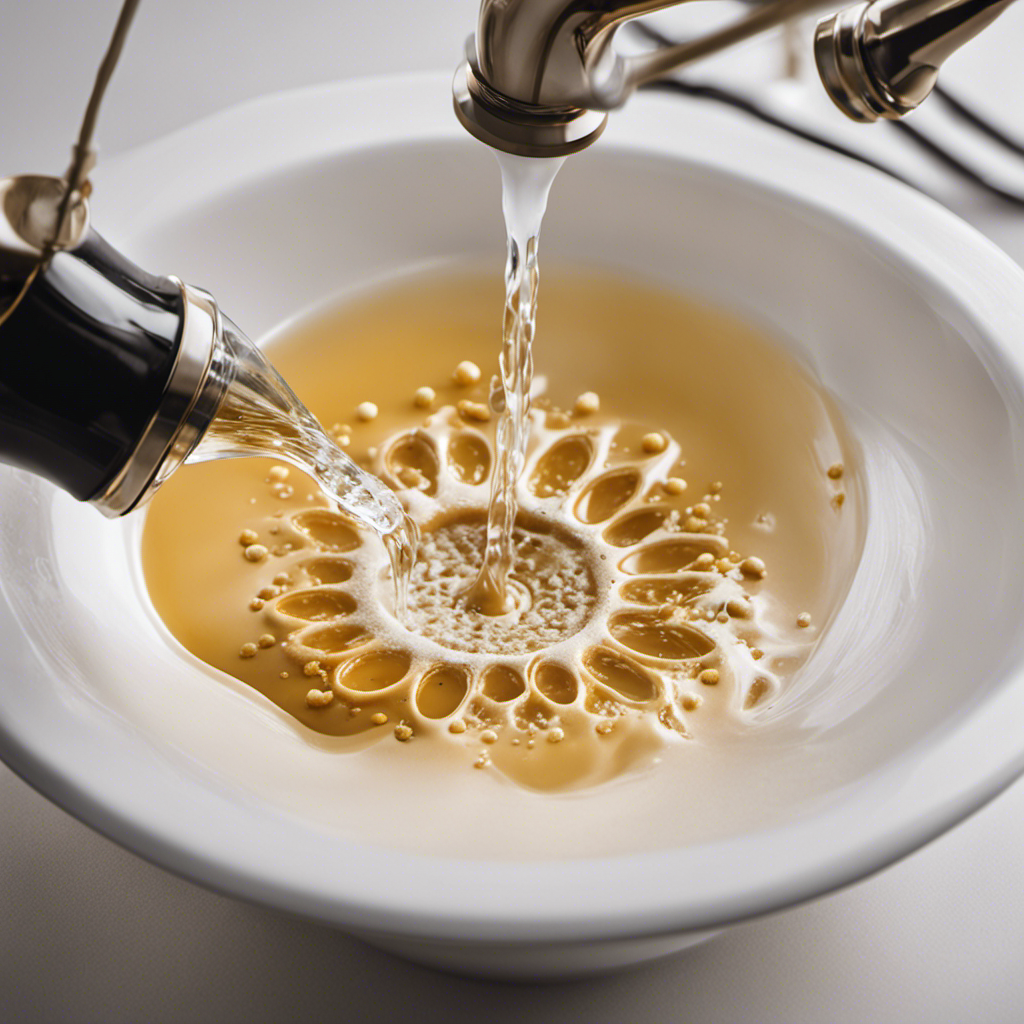I’ve been there – standing in a bathtub filled with water that just won’t drain. It’s frustrating, it’s inconvenient, and it’s time to take matters into our own hands.
In this article, I’ll walk you through the step-by-step process of unclogging a bathtub drain that’s full of water. From identifying the causes of the clog to using the right tools and materials, we’ll tackle this issue head-on.
So grab your gloves and let’s get started on reclaiming your bathtub!
Key Takeaways
- Hair accumulation in pipes is a common cause of clogged bathtub drains.
- Slow draining water, gurgling sounds, and unpleasant odors are signs of a clogged bathtub drain.
- Plunger, drain snake, baking soda, and vinegar can be used to unclog a bathtub drain.
- Avoid using chemical drain cleaners and consider professional drain cleaning services if DIY methods fail.
Causes of a Clogged Bathtub Drain
One of the most common causes of a clogged bathtub drain is hair that gets trapped in the pipes. Hair tends to accumulate over time, forming a tangled mass that obstructs the flow of water.
This can lead to a variety of common signs that indicate a clogged drain, such as slow draining water, gurgling sounds, and unpleasant odors.
When faced with a clogged bathtub drain, some people opt for professional drain cleaning services. These professionals have the necessary tools and expertise to effectively remove the clog and restore proper drainage.
However, if you prefer to tackle the issue yourself, there are several DIY methods you can try. These include using a plunger, a drain snake, or a mixture of baking soda and vinegar.
Tools and Materials Needed for Unclogging
To tackle this task, you’ll need a plunger, a drain snake, and some baking soda and vinegar.
Here’s what you need to do to unclog your bathtub drain full of water:
-
Plunger Technique: Start by placing the plunger over the drain and ensuring a tight seal. Push and pull the plunger vigorously to create suction and dislodge the clog. Repeat this several times until the water starts to drain.
-
Drain Snake: If the plunger doesn’t work, try using a drain snake. Insert the snake into the drain and rotate it while pushing it forward. This will help break up the clog and allow water to flow freely.
-
Baking Soda and Vinegar: If the clog persists, mix equal parts baking soda and vinegar. Pour this mixture down the drain and let it sit for about 30 minutes. Then, flush it with hot water. The chemical reaction between the two ingredients will help dissolve the clog.
-
Avoid Chemical Drain Cleaners: While tempting, avoid using chemical drain cleaners as they can be harmful to both your health and the environment. Stick to natural methods like the plunger technique and baking soda and vinegar solution.
Step-by-Step Guide on Clearing the Drain
Start by placing the plunger over the drain, ensuring a tight seal, and vigorously push and pull to create suction and dislodge the clog. If this doesn’t work, try using a drain snake or a wire hanger to reach down and remove the blockage. Be cautious not to push the clog further into the pipes. Another option is using a mixture of baking soda and vinegar to break down the clog. Pour half a cup of baking soda followed by half a cup of vinegar into the drain, cover with a cloth or stopper, and let it sit for about 30 minutes. Finally, flush the drain with hot water. Remember to avoid using chemical drain cleaners as they can damage your pipes. If all else fails, it may be best to consider professional drain cleaning services, as they have the proper equipment and expertise to tackle stubborn clogs without causing further damage to your plumbing system.
| Common Mistakes to Avoid | Professional Drain Cleaning Services vs. DIY Methods |
|---|---|
| Using chemical drain cleaners | Professional drain cleaning services have the expertise and equipment to effectively clear even the toughest clogs without causing damage to your pipes. DIY methods may be cheaper, but they can be less effective and potentially lead to further plumbing issues. |
| Pushing the clog further into the pipes | Professionals know how to safely and efficiently remove clogs without pushing them deeper into the plumbing system. DIY attempts may inadvertently worsen the problem. |
| Neglecting regular drain maintenance | Professionals can provide routine drain cleaning to prevent clogs from occurring in the first place. DIY methods are often reactive rather than proactive, leading to more frequent clogs and costly repairs. |
Natural Remedies and DIY Solutions to Try
If you’re looking for a cost-effective and environmentally-friendly solution, try using a mixture of baking soda and vinegar to break down stubborn clogs in your pipes.
Here’s a step-by-step guide on how to use this home remedy:
- Start by pouring 1/2 cup of baking soda down the drain.
- Follow it with 1 cup of vinegar.
- Let the mixture sit for about 30 minutes to allow it to work its magic.
- Finally, flush the drain with hot water to clear away any remaining debris.
Using baking soda and vinegar is not only a natural and safe alternative but also saves you money compared to hiring professional services. It’s a simple and effective DIY solution that can help unclog your bathtub drain without harsh chemicals or expensive equipment.
Give it a try and see the difference it can make in keeping your pipes clear and flowing smoothly.
Preventive Measures to Avoid Future Clogs
One way you can prevent future clogs is by regularly cleaning and maintaining your pipes. Here are some maintenance tips for keeping your bathtub drain clear.
First, use a drain stopper or strainer to catch hair and debris before they enter the drain. Clean the stopper or strainer regularly to remove any buildup.
Second, flush your drain with hot water once a week to help prevent clogs. You can also pour a mixture of baking soda and vinegar down the drain, followed by hot water, to keep it clear.
Lastly, be cautious about what you put down the drain. Avoid pouring grease, oil, or large amounts of food down the drain.
If you’ve tried these preventive measures and still experience frequent clogs, it may be time to call for professional drain cleaning services. They have the expertise and tools to tackle stubborn clogs effectively.
Conclusion
Well, there you have it folks! I hope this step-by-step guide on unclogging a bathtub drain full of water has been helpful to you.
Remember, prevention is key, so make sure to use a drain strainer and avoid pouring grease or hair down the drain.
And if you do find yourself with a clogged drain, don’t fret! Just grab your trusty plunger or snake and get to work.
With a little bit of elbow grease and some DIY solutions, you’ll have that drain flowing freely in no time.
So go ahead, tackle that clog like a boss and show it who’s the boss of the bathroom!










